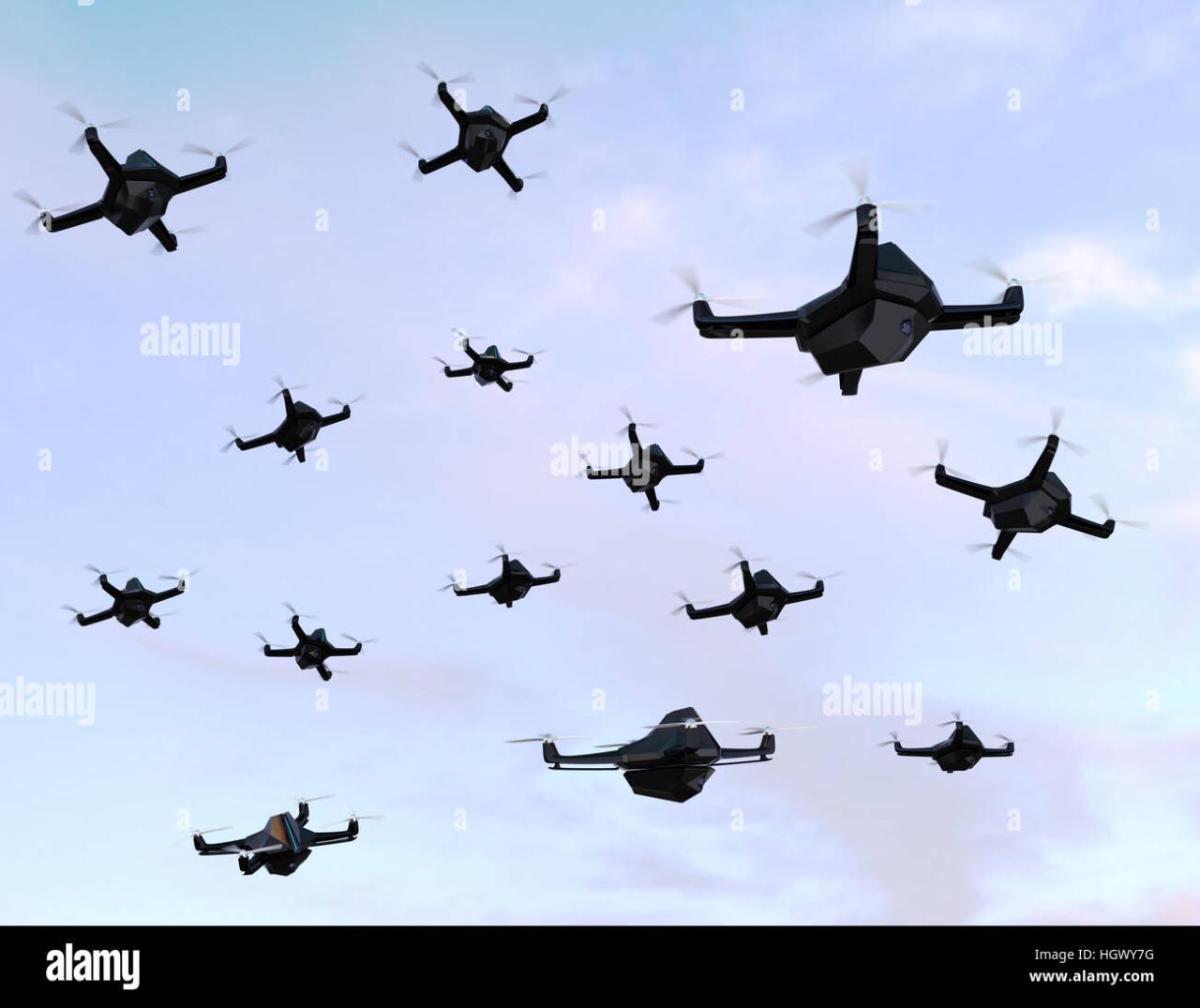Sky elements drones are revolutionizing how we study and interact with our atmosphere. Imagine drones soaring through storms, collecting vital weather data in real-time, or mapping atmospheric pollutants with pinpoint accuracy. This isn’t science fiction; it’s the exciting reality of integrating drone technology with atmospheric science. We’ll explore the innovative applications, technical challenges, and safety considerations involved in this rapidly evolving field.
From precision agriculture guided by atmospheric data to large-scale environmental monitoring using drone swarms, the potential is vast. This exploration will delve into the specifics of drone design, sensor technology, data analysis, and the regulatory landscape governing these high-flying instruments. We’ll also peek into the future of sky elements drones, envisioning advancements driven by AI and machine learning.
Sky Element Drone Applications
Drones are increasingly utilized for a wide range of applications, leveraging their unique capabilities for data acquisition in diverse environments. Integrating real-time sky element data – encompassing weather, atmospheric conditions, and celestial bodies – significantly expands their potential. This section explores innovative applications, technical challenges, and comparative analyses of drone usage in atmospheric research and environmental monitoring, concluding with a hypothetical precision agriculture mission.
Innovative Drone Applications Incorporating Sky Elements
Five innovative applications highlight the versatility of drones in conjunction with sky element data:
- Precision Agriculture: Drones equipped with multispectral and hyperspectral cameras, coupled with real-time weather data (temperature, humidity, rainfall), optimize irrigation and fertilization, leading to increased crop yields and reduced resource waste.
- Atmospheric Research: Drones can collect atmospheric samples at various altitudes, measuring pollutants, greenhouse gases, and other parameters, providing valuable insights into climate change and air quality.
- Weather Forecasting Enhancement: Drones deployed in storm systems can gather crucial real-time data (wind speed, pressure, temperature), improving the accuracy and timeliness of weather forecasts, especially in areas with limited ground-based infrastructure.
- Environmental Monitoring: Drones equipped with thermal cameras and gas sensors can monitor wildlife populations, detect forest fires, and assess the extent of environmental damage following natural disasters.
- Celestial Body Observation: Specialized drones can carry telescopes or other instruments to observe celestial events, providing valuable data for astronomical research, free from atmospheric interference (at higher altitudes).
Technical Challenges in Integrating Real-Time Weather Data
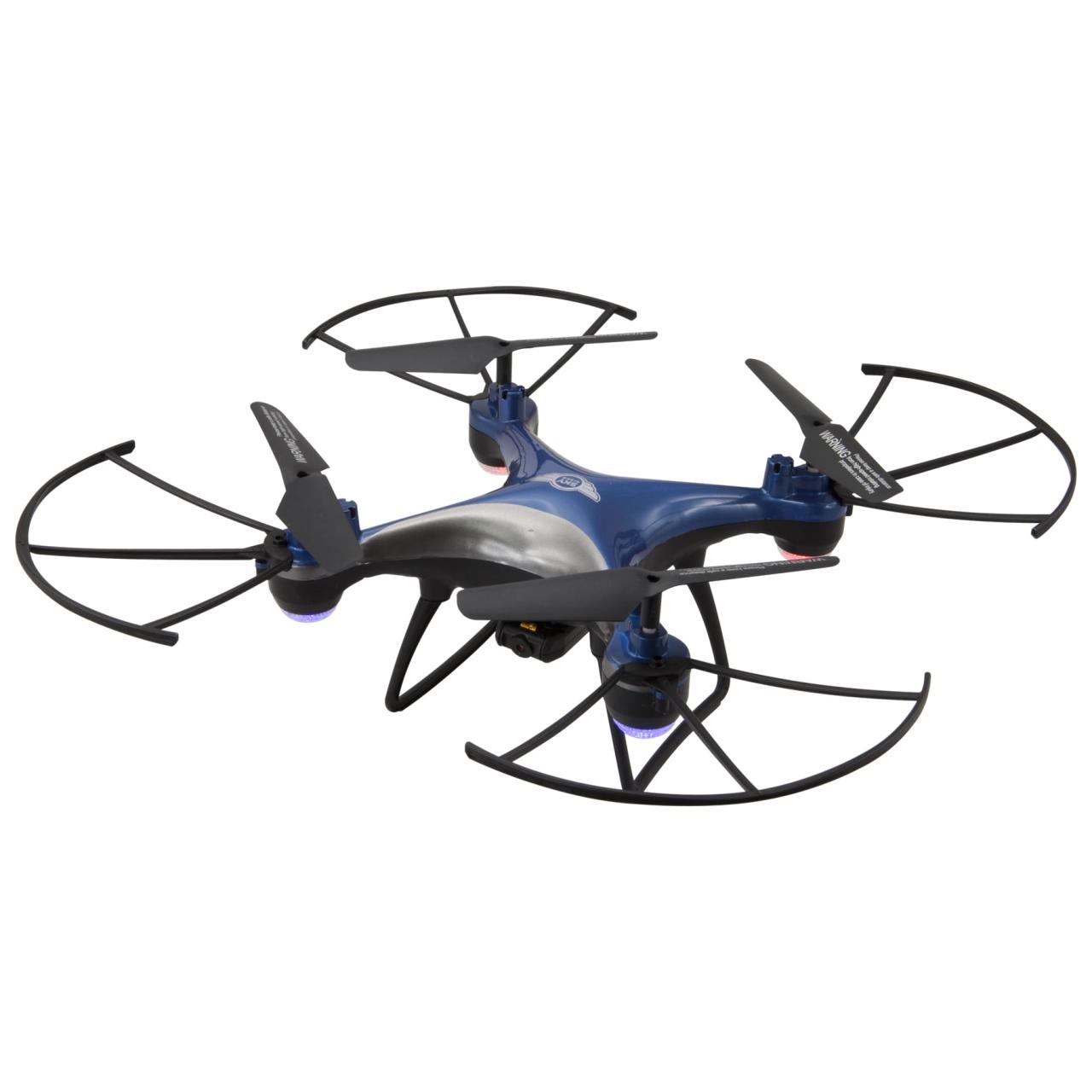
Integrating real-time weather data into drone flight control systems presents significant technical challenges. These include:
- Data Latency: Ensuring timely and accurate data transmission from weather stations or satellites to the drone is crucial for real-time decision-making in flight control.
- Data Reliability: Weather data can be variable and uncertain. Robust algorithms are needed to filter noise and ensure reliable information for drone navigation and safety.
- System Integration: Seamless integration of weather data with the drone’s flight control system, sensor data, and navigation systems requires sophisticated software and hardware.
- Power Consumption: Processing and utilizing real-time weather data can increase the drone’s power consumption, limiting flight duration.
Atmospheric Research vs. Environmental Monitoring with Drones
While both atmospheric research and environmental monitoring utilize drones, their focuses and methodologies differ:
- Atmospheric Research: Primarily focuses on understanding atmospheric processes, composition, and dynamics, often involving higher altitudes and specialized sensors for measuring gases and aerosols.
- Environmental Monitoring: Emphasizes observing and assessing environmental conditions and changes at ground level and lower altitudes, utilizing sensors for temperature, humidity, pollution levels, and visual imaging.
Hypothetical Drone Mission for Precision Agriculture
A hypothetical drone mission for precision agriculture would involve a drone equipped with multispectral cameras, GPS, and sensors for temperature, humidity, and soil moisture. The drone would map the field, identifying areas with varying nutrient levels and moisture stress. Based on this data and real-time weather forecasts, the drone would guide automated irrigation and fertilizer application systems, optimizing resource use and maximizing crop yields.
Drone Technology and Sky Elements
The design and operation of drones are heavily influenced by sky elements, particularly wind and atmospheric conditions. This section explores the impact of wind, the sensors used to measure atmospheric parameters, adaptations for extreme weather, and the role of navigation systems.
Impact of Wind on Drone Flight
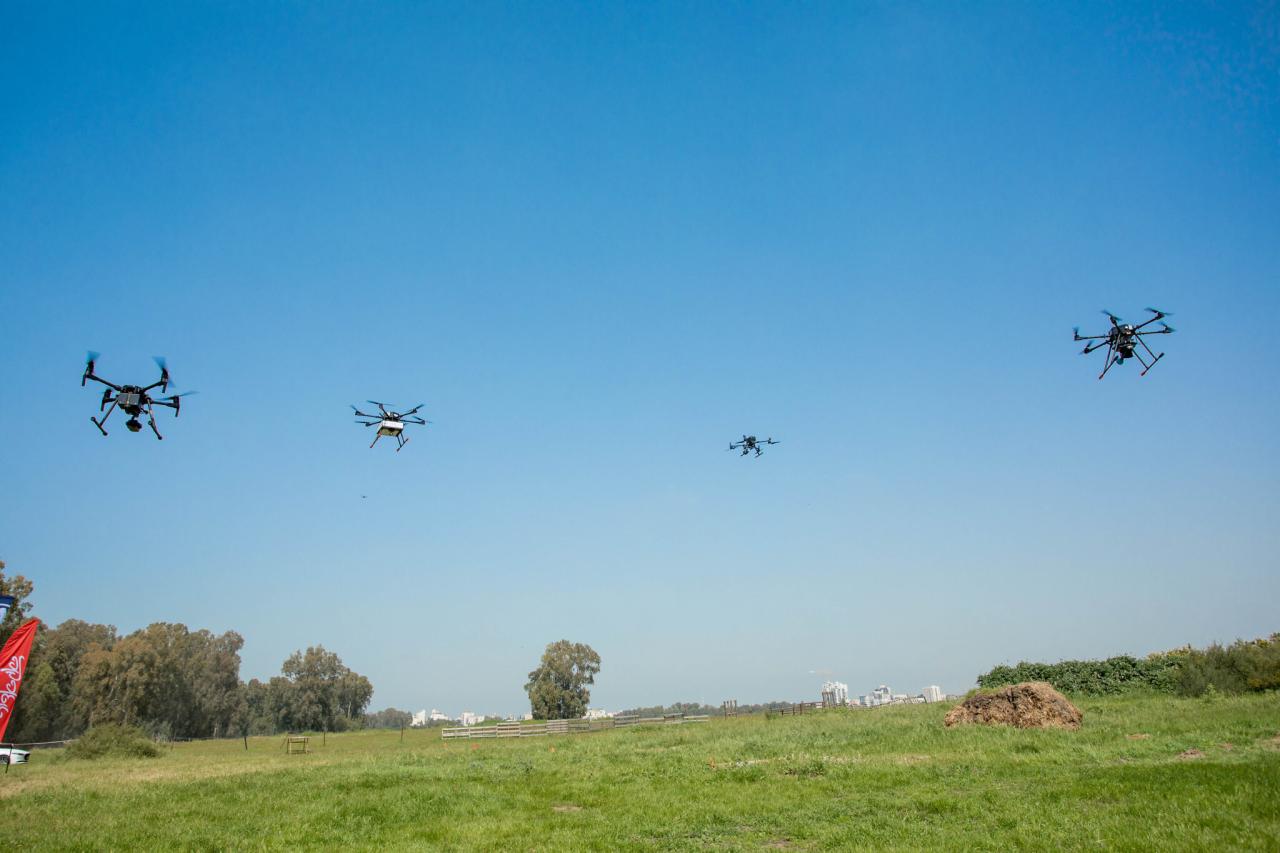
Wind speed and direction significantly affect drone flight stability and trajectory. Strong winds can cause the drone to drift, increasing the risk of accidents. Drone flight controllers use algorithms to compensate for wind effects, but limitations exist, particularly in extreme conditions.
Drone Sensors for Atmospheric Measurement
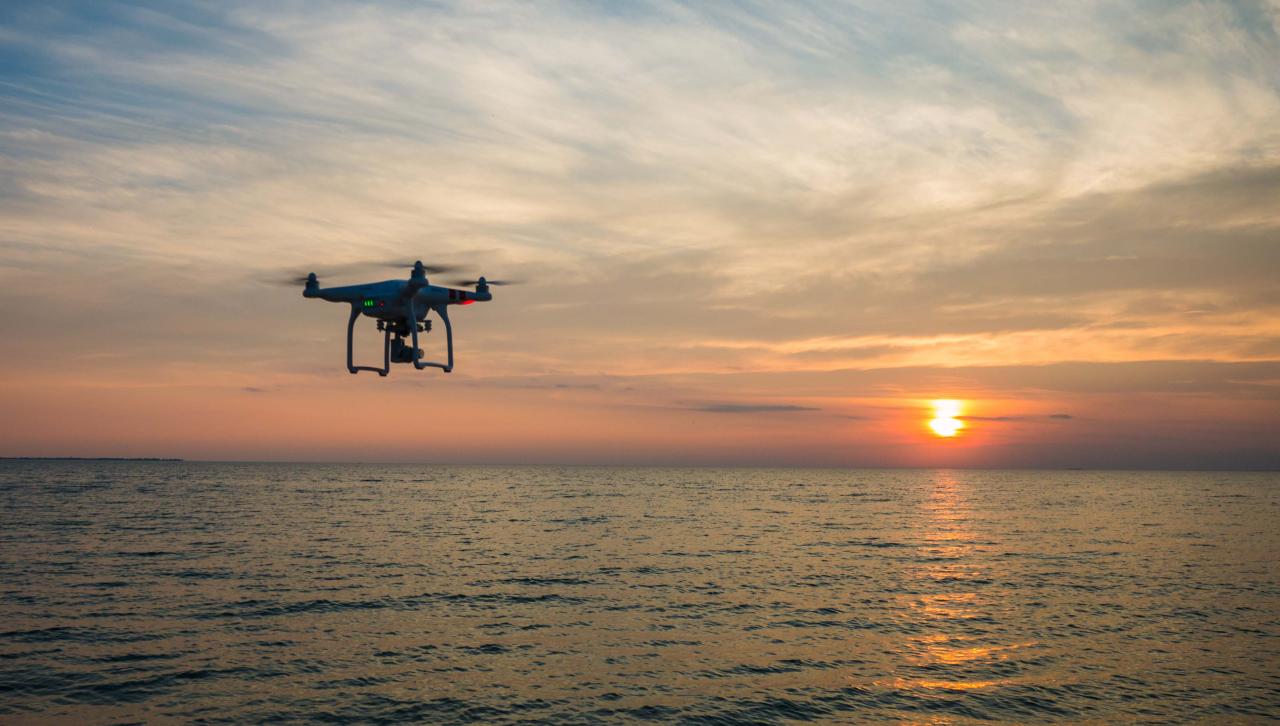
Drones utilize a variety of sensors to measure atmospheric pressure, temperature, and humidity. These include:
- Barometric Pressure Sensors: Measure atmospheric pressure, used for altitude estimation and altimeter readings.
- Temperature Sensors: Measure ambient air temperature, essential for various atmospheric studies and weather forecasting.
- Humidity Sensors: Measure the amount of water vapor in the air, crucial for understanding weather patterns and environmental conditions.
Drone Design Adaptations for Extreme Weather
Drone designs are adapted for operation in extreme weather conditions through features such as:
- Reinforced Frames: To withstand high winds and impacts.
- Waterproof Enclosures: To protect electronics from rain and snow.
- De-icing Systems: For operation in freezing conditions.
Role of GPS and Navigation Systems
GPS and other navigation systems are crucial for accurate drone positioning in varying atmospheric conditions. However, GPS signals can be weakened or disrupted by atmospheric interference, requiring redundant navigation systems, such as inertial measurement units (IMUs) and vision-based systems.
Safety and Regulations
Safe and responsible drone operation requires adherence to strict safety protocols and regulatory frameworks. This section discusses safety protocols near airports, potential hazards, a hypothetical regulatory framework, and best practices for responsible drone use.
Safety Protocols Near Airports and Airspace Restrictions
Operating drones near airports and other airspace restrictions requires prior authorization and strict adherence to safety guidelines. These guidelines include maintaining a safe distance from aircraft, avoiding congested airspace, and complying with air traffic control instructions.
Sky elements drones are becoming increasingly popular, offering amazing aerial views and innovative applications. However, safety is paramount, and a recent incident highlighted this: check out this news report about a boy hit by drone , which underscores the need for responsible drone operation. Understanding the risks and following safety guidelines is crucial when using sky elements drones to prevent similar accidents.
Potential Hazards Associated with Drone Operation
Potential hazards associated with using drones in diverse sky elements include:
- Lightning Strikes: Drones are vulnerable to lightning strikes, especially during thunderstorms.
- Turbulence: Strong winds and turbulence can destabilize drone flight, leading to crashes.
- Hail and Ice: Hail and ice can damage drone components.
Hypothetical Regulatory Framework for Commercial Drone Operations
A hypothetical regulatory framework for commercial drone operations involving atmospheric data collection would include licensing requirements for operators, stringent safety protocols, data privacy regulations, and clear guidelines for airspace access and operation.
Sky elements drones are becoming increasingly popular for spectacular light shows, and if you’re looking for inspiration, check out the amazing displays at the orlando drone show. Seeing these performances really highlights the potential of drone technology in creating breathtaking aerial artistry. The level of coordination and visual impact achieved with sky elements drones is truly impressive.
Best Practices for Responsible Drone Usage
| Condition | Safety Measure | Potential Hazard | Mitigation Strategy |
|---|---|---|---|
| High Winds | Reduce flight altitude, avoid flying in open areas | Drone loss of control, crash | Use wind speed sensors, adjust flight plan accordingly |
| Rain | Use waterproof drone, avoid prolonged exposure | Electronic failure, water damage | Check weather forecast, limit flight duration |
| Fog | Reduce flight altitude, use obstacle avoidance systems | Collision with obstacles, loss of visual contact | Avoid flying in dense fog, use GPS and other navigation aids |
| Thunderstorms | Do not fly | Lightning strike, loss of control | Monitor weather radar, postpone flight until conditions improve |
Data Acquisition and Analysis
Effective drone-based atmospheric monitoring requires robust methods for data acquisition, processing, and analysis. This section details methods for collecting and processing data, sensor calibration, data storage and transmission, and a visual representation of the overall workflow.
Method for Collecting and Processing Atmospheric Data
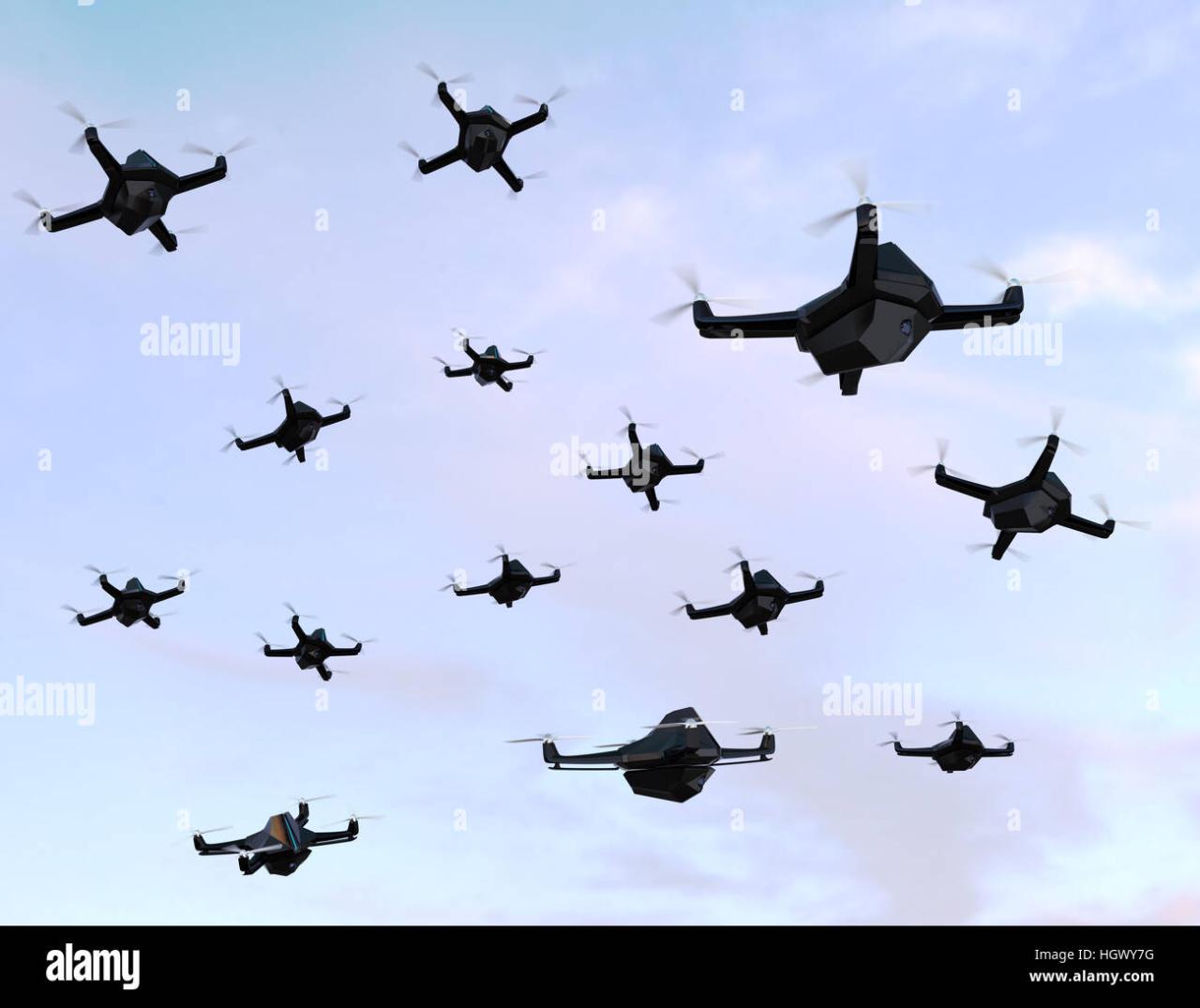
Atmospheric data is collected using drone-mounted sensors, which measure various parameters. The data is then transmitted wirelessly to a ground station for processing and analysis. Data processing involves cleaning, filtering, and calibrating the raw data to remove noise and errors. Statistical analysis techniques are applied to extract meaningful insights.
Calibration of Drone Sensors
Sensor calibration is crucial for ensuring data accuracy and reliability. This involves comparing sensor readings to known standards under controlled conditions, adjusting sensor parameters to minimize errors. Regular calibration is essential to maintain data quality over time.
Data Storage and Transmission Methods, Sky elements drones
Various methods exist for storing and transmitting drone-collected atmospheric data. These include:
- Onboard Storage: Data is stored on the drone’s internal memory and downloaded after the flight.
- Real-time Transmission: Data is transmitted wirelessly to a ground station during the flight.
- Cloud Storage: Data is uploaded to a cloud-based storage system for access and analysis.
Workflow of Data Acquisition, Processing, and Analysis
The workflow begins with data acquisition using drone-mounted sensors. The raw data is then transmitted to a ground station for pre-processing, which includes cleaning and filtering. This is followed by calibration and quality control checks. The processed data is then analyzed using statistical methods and visualization techniques to extract meaningful insights. Finally, the results are reported and interpreted in the context of the research objectives.
Future Trends and Innovations
The field of drone technology is constantly evolving, with significant potential for advancements in atmospheric research and monitoring. This section explores future trends, including the integration of AI and machine learning, the potential of drone swarms, and a novel drone-based system for studying climate change.
Future Advancements in Drone Technology
Future advancements include more efficient and longer-lasting batteries, improved sensor technology, and more robust flight control systems capable of operating in challenging atmospheric conditions. Miniaturization of sensors will enable smaller and more agile drones.
Integration of AI and Machine Learning
AI and machine learning will play a crucial role in improving drone-based atmospheric data analysis. AI algorithms can automate data processing, identify anomalies, and develop predictive models for weather forecasting and environmental monitoring. For example, AI could analyze sensor data to predict the formation of severe weather events more accurately.
Potential of Drone Swarms
Drone swarms offer the potential for large-scale atmospheric monitoring and research. Multiple drones can cover a larger area and collect data more efficiently than a single drone. Data collected by the swarm can be combined to create a comprehensive picture of atmospheric conditions.
Novel Drone-Based System for Studying Climate Change
A novel drone-based system for studying the impact of climate change could consist of a network of autonomous drones equipped with various sensors to measure temperature, humidity, wind speed, greenhouse gas concentrations, and aerosol levels. The drones would be coordinated by a central control system, using AI algorithms to optimize data collection and identify areas of interest. The system would provide real-time data on atmospheric changes, aiding in the development of climate change mitigation strategies.
Sky elements drones are becoming increasingly popular for their versatility and stunning visual effects. If you want to see some truly amazing drone displays, check out the incredible choreography at the orlando drone show ; it’s a great example of what’s possible with advanced drone technology. Then, consider how sky elements drones could be used to create similar breathtaking spectacles in your own events.
Data visualization tools would create dynamic 3D models of atmospheric conditions, allowing for detailed analysis of climate change impacts.
Ultimate Conclusion
Sky elements drones are more than just sophisticated flying machines; they are powerful tools transforming our understanding of the atmosphere. By overcoming technical challenges and adhering to strict safety protocols, we can unlock their full potential for scientific discovery, environmental protection, and improved agricultural practices. The future promises even more sophisticated drones, capable of collecting and analyzing atmospheric data with unprecedented accuracy and efficiency, leading to a deeper understanding of our planet and its climate.
Question Bank: Sky Elements Drones
How long can a sky elements drone typically fly on a single charge?
Flight time varies greatly depending on the drone model, payload, and weather conditions. Generally, expect anywhere from 20 minutes to an hour or more.
What happens if a drone loses GPS signal during a mission?
Most modern drones have fail-safes like return-to-home functionality. However, losing GPS can still be risky, and careful planning of flight paths and redundancy systems are crucial.
Are there specific licenses or permits required to operate sky elements drones commercially?
Yes, regulations vary by country and region. Commercial operation often requires specific licenses and adherence to strict airspace regulations. Check with your local aviation authority for details.
How is the data collected by sky elements drones secured and protected?
Data security is paramount. Secure data transmission protocols, encryption, and robust data storage solutions are essential to prevent unauthorized access or data loss.
